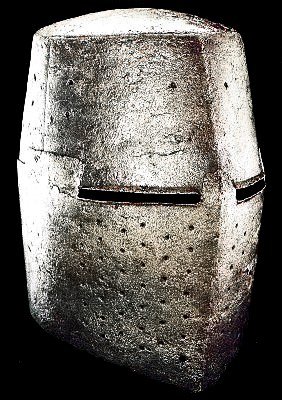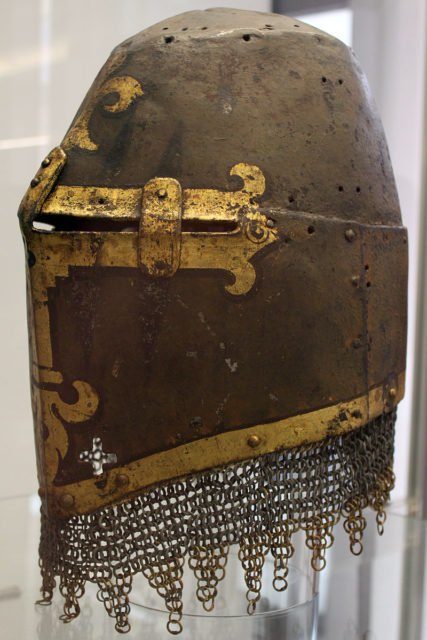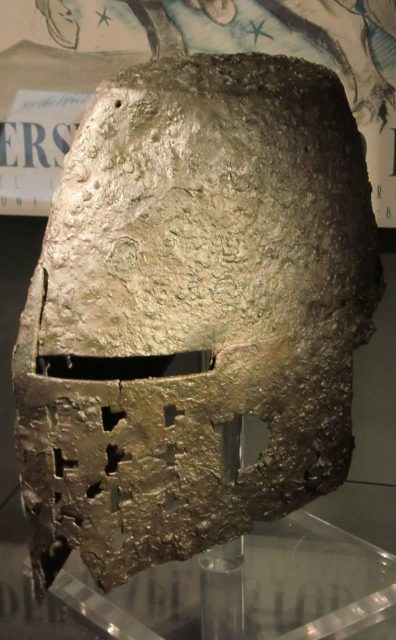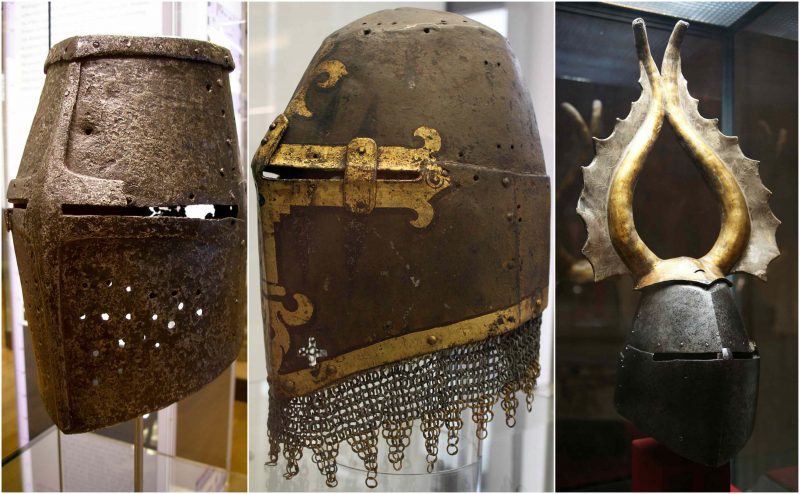A helmet from the High Medieval Period went by many names – the Great Helm or Heaume, also called Barrel Helm, Bucket Helm, and Pot Helm. It is a helmet that was created in the late 12th century at the time of the Crusades, and it remained in use until the 14th century.
It was utilized by Knights and most of the infantry in European armies. In its plainest form, the first design of the Great Helm was a cylinder of steel with a flat top that completely covered the head with tiny slits for the eyes and occasionally, an opening for the mouth. Later designs implemented a rather rounded design, predominantly on the top, to deflect or diminish the impact of blows to the head.


After a while, the Great Helm progressed from the nasal helmet of approximately 1180 AD, which had been fashioned in a flat-topped version with a square shape. From this type of helmet, a transitional style, sometimes called the first Great Helm, developed around the end of the 12th century.
For this helmet, the modifications included an expansion of the nasal protection with an increased sight-line and a full faceplate, pierced with openings for breathing. Even with these enhancements, this helmet was mostly outclassed, around 1240 AD, by the actual Great Helm.
A subsequent variation with a more pointed top was known as the Sugarloaf Helm. In Spanish, these were called Yelmo de Zaragoza, referring to the place where they were first introduced in Zaragoza, at the Iberian Peninsula.


Although the Great Helm offered a remarkably greater protection than the other helmets, such as the Nasal Helm and the Spangenhelm, it had restricted peripheral vision for the wearer. In addition to being heavy, the mass-produced flat top form without pierced holes provided very little ventilation for breathing and would very quickly become sweltering in hot weather.
Knights usually wore the Great Helm over a chain mail hood, and sometimes the mail coif would be covered with a cervelliere, a close-fitting iron skullcap. A later development of the cervelliere, the bascinet, had improvements that protected more of the neck and shoulders and were also worn beneath the Great Helm; after the first encounter with lances, jousters would often remove the Great Helm for increased sight capability and superior agility in hand-to-hand combat.





The bascinet had a chain mail curtain attached, a camail or aventail, which made the coif obsolete. When plate gorgets were introduced around 1400 AD, chain mail throat and neck protectors became outdated.
From its early skullcap form, the bascinet evolved to replace the Great Helm for combat. The Great Helm, for the most part, was abandoned during the 15th century. However, it was frequently used in tournaments where another version of the Great Helm evolved– the “frog-mouthed” tilting faceguard.
